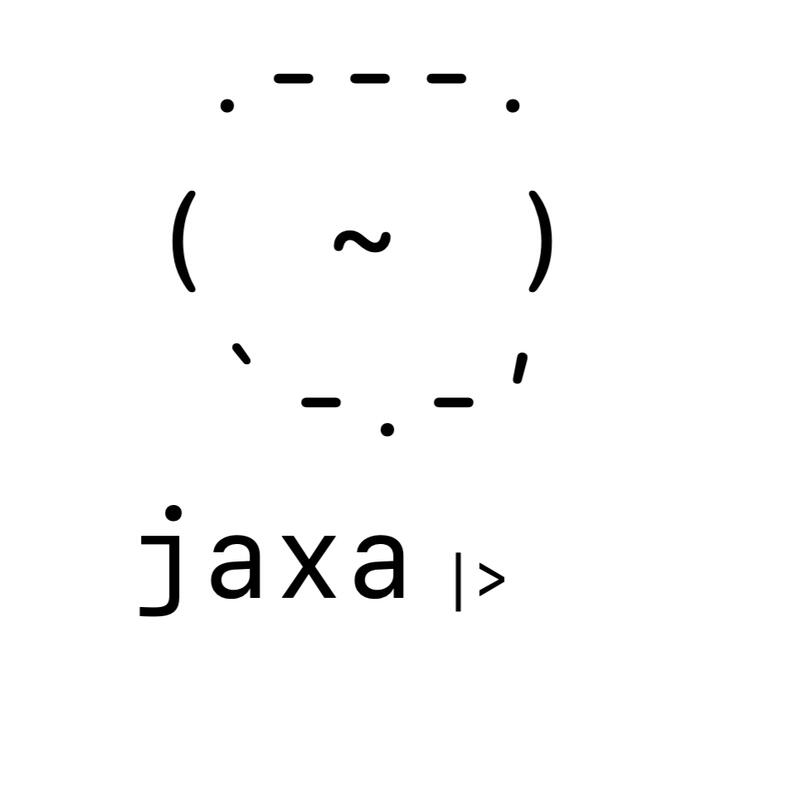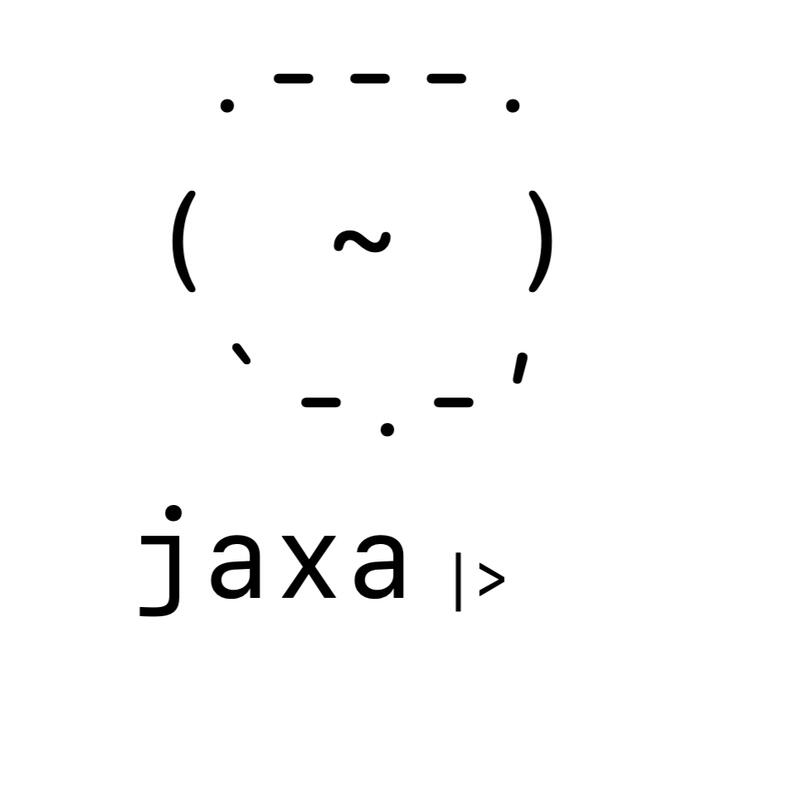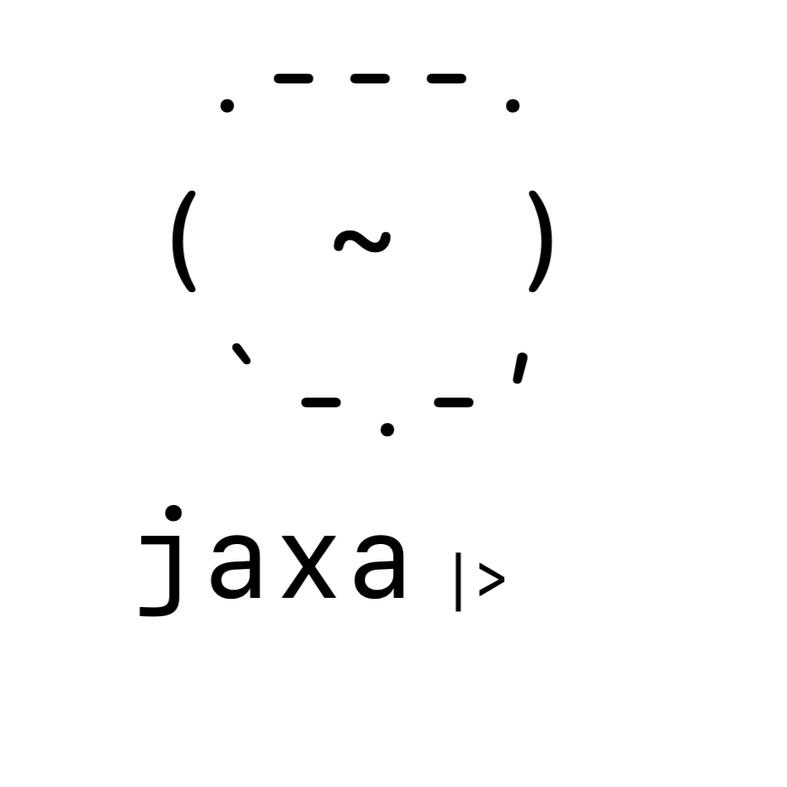jaxa - live coding

live coding, algorithmic composition, experimental music, aesthetics.
Performances

| Venue | Address | Date | Link |
|---|---|---|---|
| Kunsthalle Düsseldorf | Grabbeplatz 4, Düsseldorf | 22.03.2025 | https://execute.live |
| Grrrnd Zero | 56-60 Av. Bohlen, Vaulx-en-Velin | 24.05.2025 | https://grrrndzero.org/ |
| Cantiere San Bernardo | Via Pietro Gori, 56125, Pisa | 14.06.2025 | https://www.cantieresanbernardo.com |
Code snippets

/* coming soon */
Words

aboutI'm a composer who live codes under the pseudonym of jaxa. My music, created primarily in SuperCollider, is semi-improvised and semi-composed. The code itself functions as an open score and can be followed in many of my YouTube uploads, where I am most active.
The organisation of sounds corresponds predominantly to bipolar axes such as regularity vs irregularity, noise vs pitched-based sounds, minimalism vs ornamentation, and saturation vs clarity.
Based in Berlin, I've recently started to travel to perform. I am particularly interested in the interdisciplinary potential of live coding, seeking to connect with digital artists across various fields.
Contact me; I do my best to reply to (almost) all messages and queries.
j4x4.5ound[at]gmail.com
Between Layout and Spontaneity: Why I Live CodeIn the broadest terms, I have always assigned value to complexity in music (and, more expansively, in artistic praxis). The act of deciphering a composer’s intent—how structural delineations, material contingencies, and timbral articulations fuse into an overarching formal discourse—constitutes a fundamental aspect of my engagement with music. Alongside interpretation, it is at this level—at times profoundly, at others more tangentially—that I experience pleasure in music.
Nonetheless, a persistent difficulty I encounter in much of contemporary music (both instrumental and electroacoustic) is its tendency toward opacity, even impenetrability. It frequently appears as though the distinctions between complexity, complication, and difficulty are obscured or, indeed, merged. Confrontation with a labyrinthine work whose structure prioritises inaccessibility over dynamic engagement often causes fatigue, dispersion, and disengagement.
Live coding provides an environment where real-time decision-making, risk, and structural multiplicity exist in a state of continual dialogue and friction. And yet, within the aesthetic framework I have explored so far, the results are neither impenetrable nor hermetic, nor cryptic, nor do they present particular perceptual challenges. It seems possible, without abandoning complexity—understood as the rendering of decision-making processes, their velocity, and their stratification as mechanisms of temporal projection—to construct a musical discourse that retains an immediate intelligibility, even on first exposure.
The intricacies of the code itself, the performative gesture of live coding in full visibility of an audience whilst sharing the screen, and the challenge of extracting music from an evolving script—particularly within a framework of quasi-metric pulsations and circumscribed melodic contours—constitute a combination that I find compelling. It is as though the performer internalises and resolves the burden of difficulty in real-time construction in order to render sounds that, despite their procedural intricacy, remain perceptually apprehensible.
JitLib/ProxySpace - considerations
In my live coding practice, I make exclusive use of SuperCollider’s JITLib framework, specifically within the ProxySpace environment. This system enables the real-time creation, manipulation, and reconfiguration of sound processes while maintaining an uninterrupted musical flow—unless, of course, disruption is itself an aesthetic objective.
ProxySpace operates under a distinct logic that diverges from SuperCollider’s conventional paradigm in several ways. A NodeProxy can be played before its content is defined, functioning as a dynamic placeholder that seamlessly integrates new material once assigned. ProxySpace also automates bus management, dynamically allocating audio and control buses without the need for explicit routing, contrasting with standard SuperCollider, where precise bus indexing is required. Additionally, re-evaluating a NodeProxy’s source updates its existing node rather than instantiating a new one, ensuring smooth sonic transitions without accumulating redundant processes.
This approach affords an intricate and continuously evolving engagement with musical material. Within the ProxySpace environment, sound is treated as a fluid entity, one that can be incrementally refined, transformed, or wholly reconfigured in real time. Such an approach fosters an interplay between immediacy and structural evolution, where musical elements are not static constructs but dynamically shifting parameters within an overarching discourse. The ability to instantiate, modify, and dissolve sound layers at will allows for an explorative compositional approach, where the boundaries between improvisation and premeditated design become productively ambiguous.
While these features afford a flexible and dynamic approach to sound organisation, they come with notable drawbacks. ProxySpace’s operational logic differs substantially from SuperCollider’s default workflow, requiring a shift in conceptual and practical understanding. The verbosity of SuperCollider’s syntax means that live coding within this framework involves considerable typing, increasing the likelihood of errors that can momentarily halt a performance. Moreover, ProxySpace introduces additional conceptual hurdles: for example, a NodeProxy is continuously active, meaning that modifications to its parameters must be made with an awareness of its persistent nature, unlike standard SynthDefs, which are typically instantiated and terminated explicitly. The more intricate and layered the performance, the greater the risk of compounding errors, whether in syntax or unintended interactions between processes. Additionally, the steep learning curve of JITLib demands extensive familiarity before one can fully leverage its capabilities in a fluid and expressive manner.
Nevertheless, these challenges are intrinsic to the nature of live coding itself. The fragility of the system, the necessity for constant recalibration, and the continuous negotiation between control and unpredictability all shape a creative process where each performance becomes an intricate interplay of constraints and possibilities. It is this dynamic tension that makes live coding in ProxySpace both a rigorous and deeply compelling artistic practice—one in which the coding environment itself becomes an active participant in the generative process, simultaneously enabling and resisting, structuring and disrupting, stabilising and destabilising the musical discourse.
For more detailed information about JITLib and its features, you can visit the official JITLib website here: